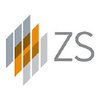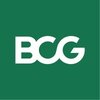Indian School of Business (ISB), Hyderabad
Hyderabad, Telangana
Your seniors at Indian School of Business (ISB), Hyderabad helped you with their notes. Now they're helping you with their placement interview questions. 🙏

Indian School of Business (ISB), Hyderabad
Your seniors at Indian School of Business (ISB), Hyderabad helped you with their notes. Now they're helping you with their placement interview questions. 🙏

I applied via Campus Placement






